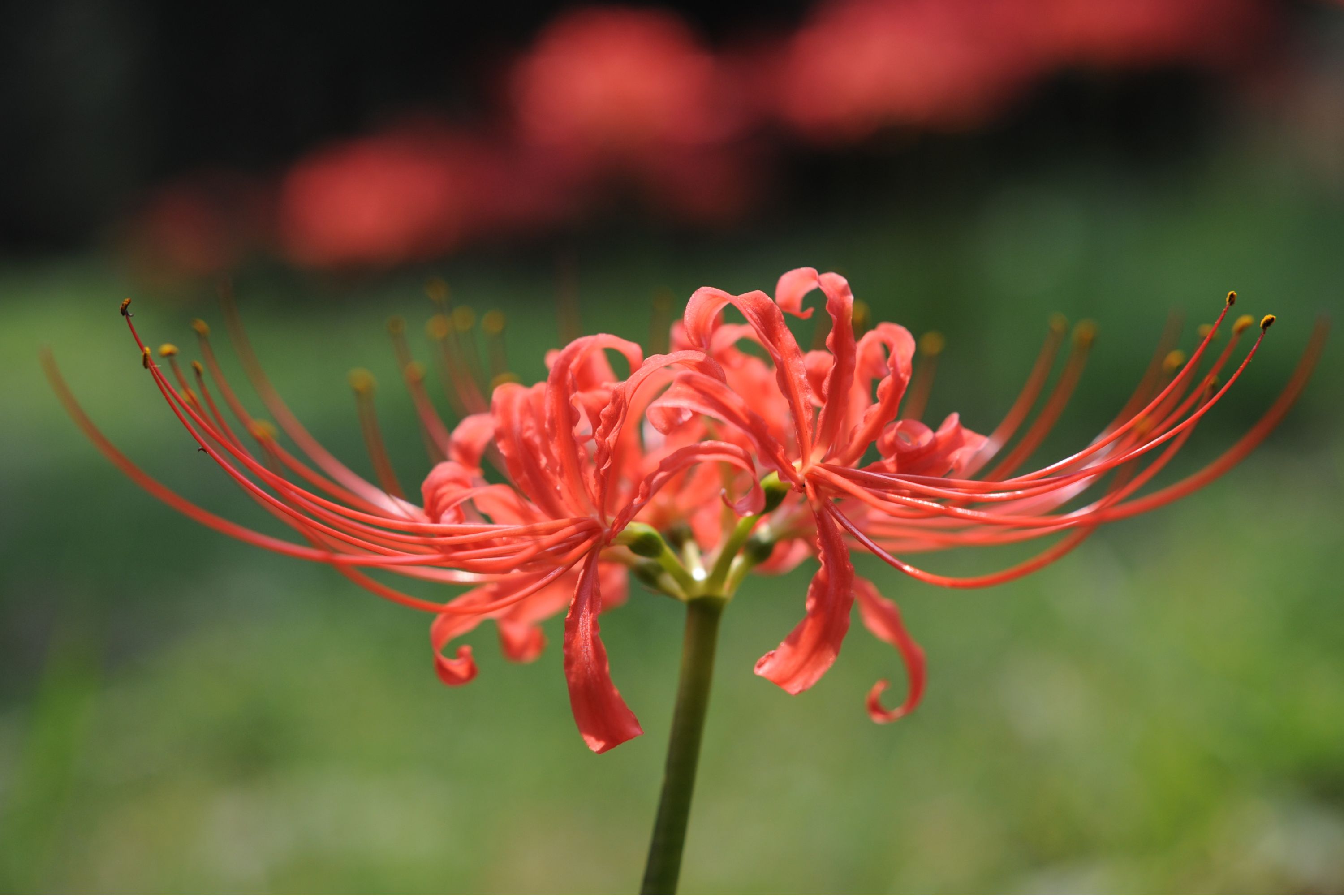Red spider lily
(Lycoris radiata)

Description
Lycoris radiata, commonly known as red spider lily, is a perennial flowering plant belonging to the Amaryllidaceae family. This striking plant is native to East Asia, including Japan, China, and Korea. It has been widely cultivated as an ornamental plant in many countries for its beautiful and showy flowers. In this article, we will delve into the various aspects of this plant, including its taxonomy, morphology, distribution, cultivation, and medicinal properties. Taxonomy and Nomenclature Lycoris radiata was first described by Carl Peter Thunberg, a Swedish botanist, in 1784. The genus name Lycoris is derived from the Greek word 'lykourgos', meaning 'wolf-repellent', as the plant was believed to have magical properties that could ward off wolves. The specific epithet 'radiata' refers to the radiant or star-like appearance of the flower. Morphology Lycoris radiata has a bulbous underground structure with long, strap-like leaves that emerge from the bulb in late winter or early spring. The leaves grow up to 50 cm long and 1-2 cm wide, and they are green and glossy. The flowers emerge on naked scapes or stalks that grow up to 50-60 cm tall. Each scape bears a cluster of 6-10 flowers that are bright red in color and shaped like a funnel. The flowers have six curved petals that are fused at the base, forming a tube-like structure. The stamens and pistil are long and protrude out of the tube. The flowers are fragrant and last for several weeks. Distribution Lycoris radiata is native to East Asia, including Japan, China, and Korea. In Japan, the plant is called 'higanbana', which means equinox flower, as it blooms around the autumn equinox. The plant grows in a variety of habitats, including open fields, meadows, and forest edges. In its native range, Lycoris radiata is considered an indicator species of ancient woodland and is protected by law. Cultivation Lycoris radiata is widely cultivated as an ornamental plant in many countries, including the United States, Australia, and Europe. The plant is easy to grow and requires little maintenance. It prefers well-drained soil and full sun to partial shade. The bulbs should be planted in the fall, with the pointed end facing upwards and the top of the bulb just below the soil surface. The plant will grow and flower in the spring and summer, and then the leaves will die back in the fall. The bulbs can be left in the ground year-round, or they can be dug up and stored in a cool, dry place during the dormant season. Medicinal Properties Lycoris radiata has been used in traditional Chinese medicine for centuries to treat a variety of ailments, including inflammation, pain, and gastrointestinal disorders. The bulbs and flowers contain a number of bioactive compounds, including alkaloids, flavonoids, and phenolic acids, that have been shown to have anti-inflammatory, antioxidant, and anticancer properties. Recent studies have also demonstrated that Lycoris radiata extracts can inhibit the growth of several types of cancer cells, including lung, breast, and colon cancer cells. Conclusion Lycoris radiata, or red spider lily, is a beautiful and fascinating plant that has captured the hearts of gardeners and plant enthusiasts around the world. Its stunning red flowers, easy cultivation, and medicinal properties make it a popular plant for both ornamental and medicinal purposes. With its long history and diverse uses, Lycoris radiata is sure to continue to fascinate and inspire us for many years to come.
Taxonomic tree:







